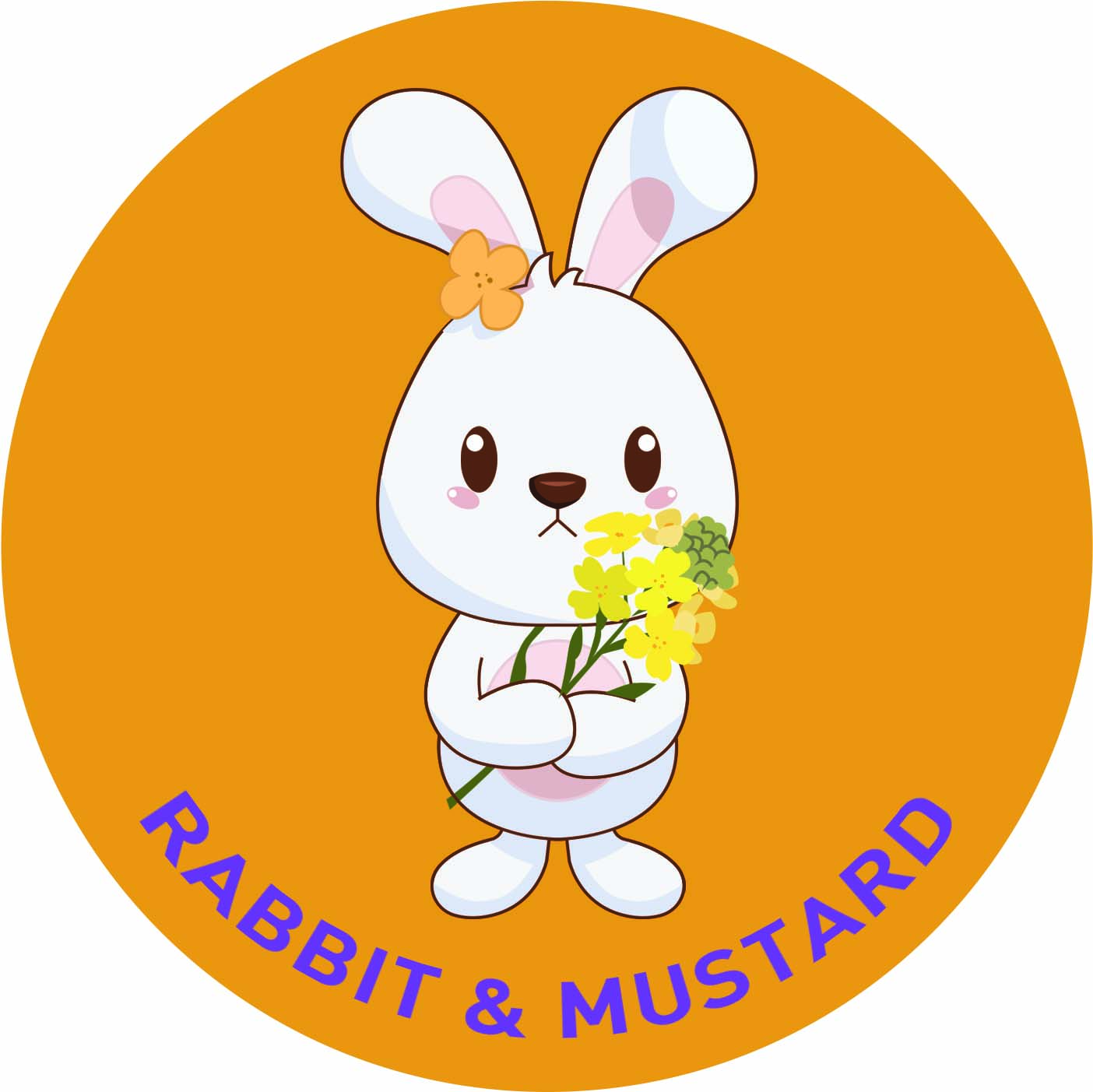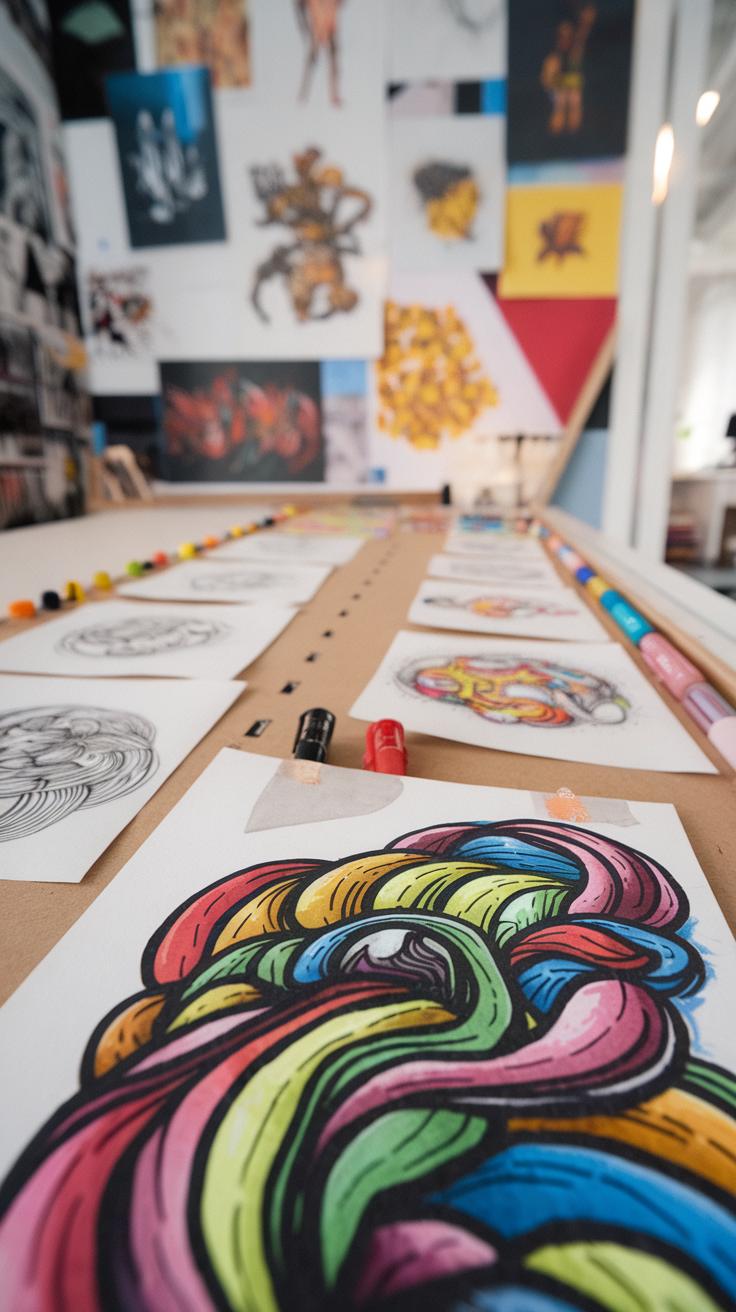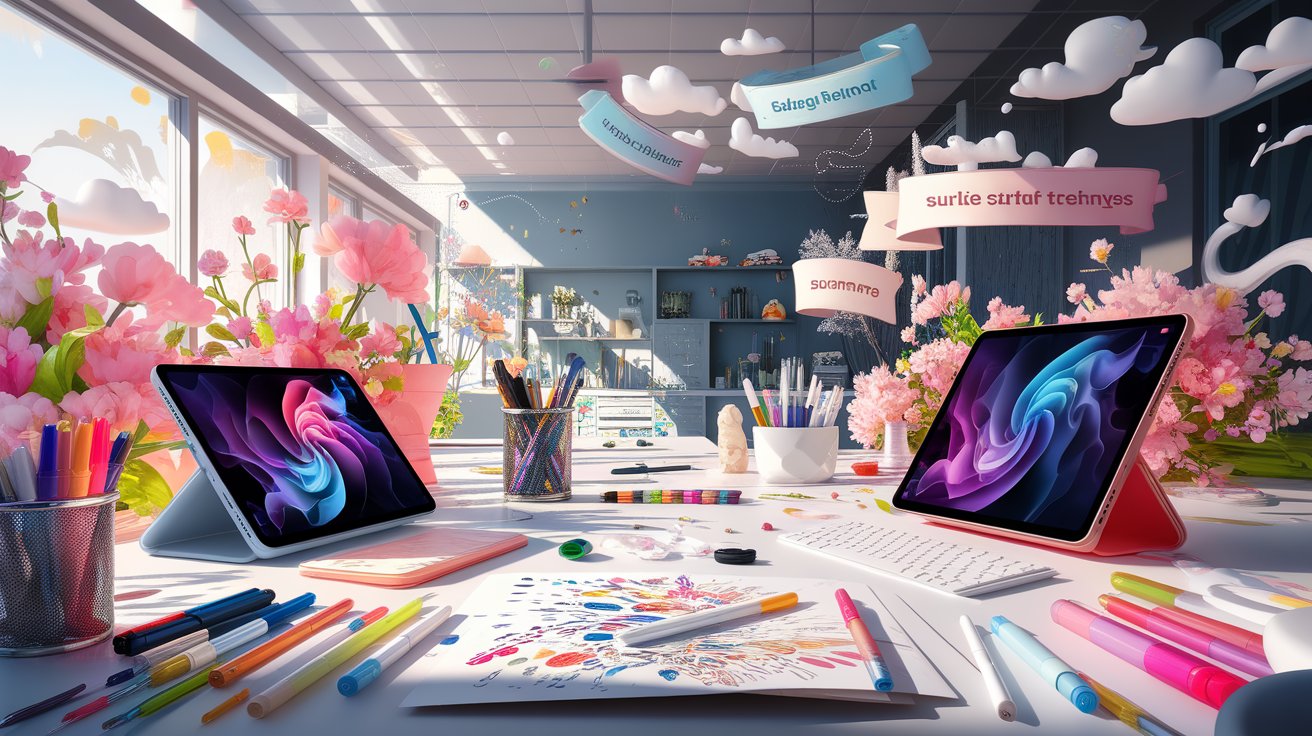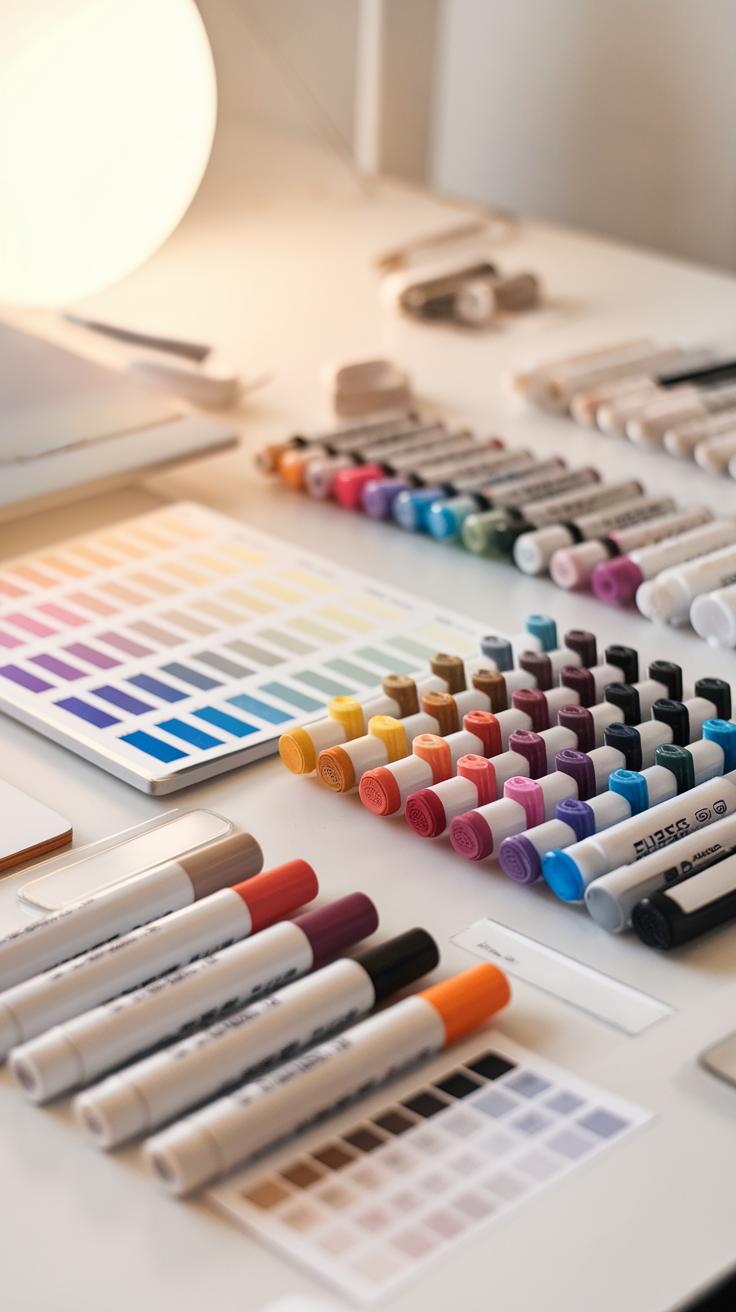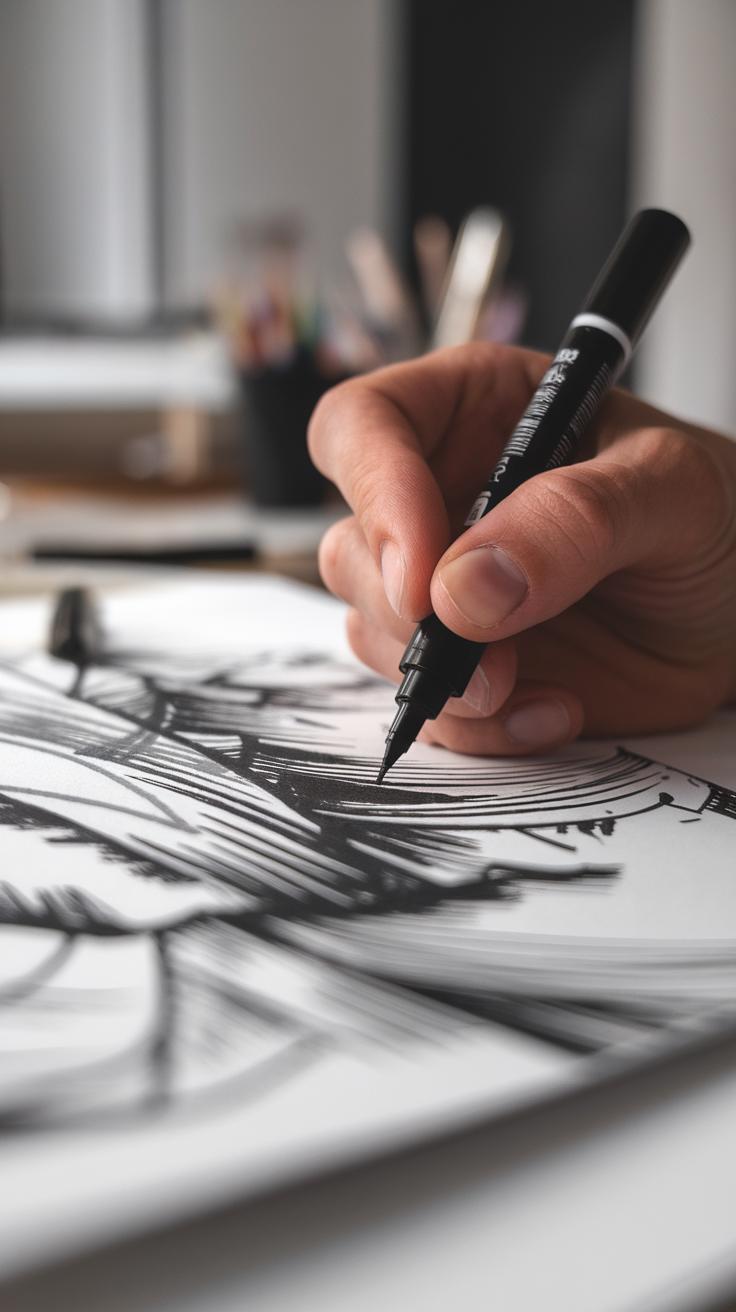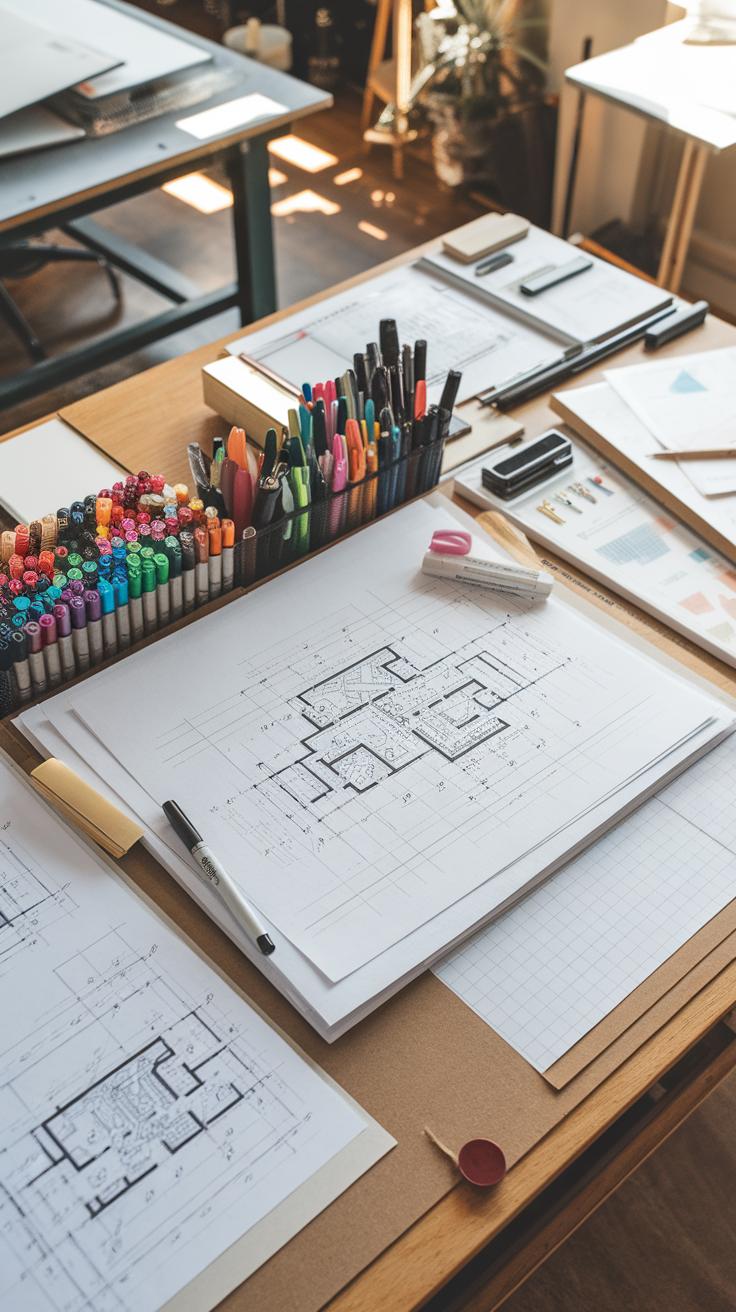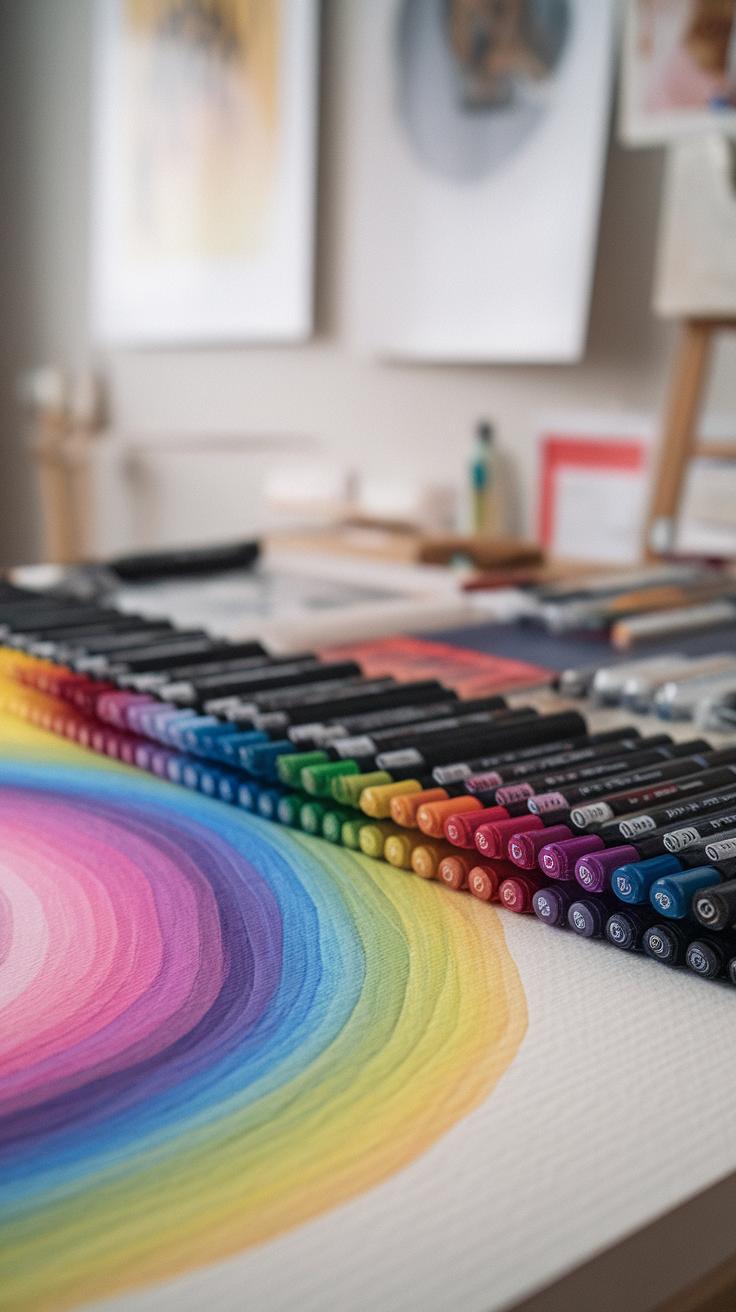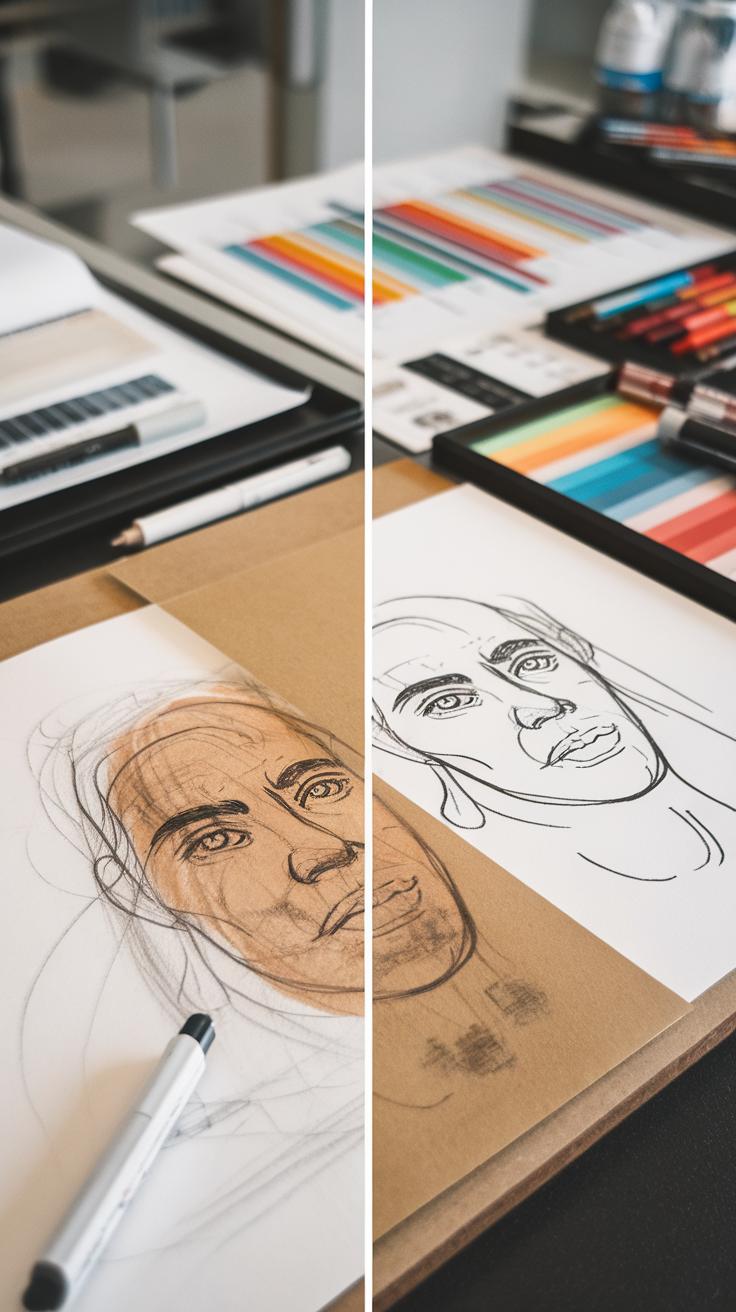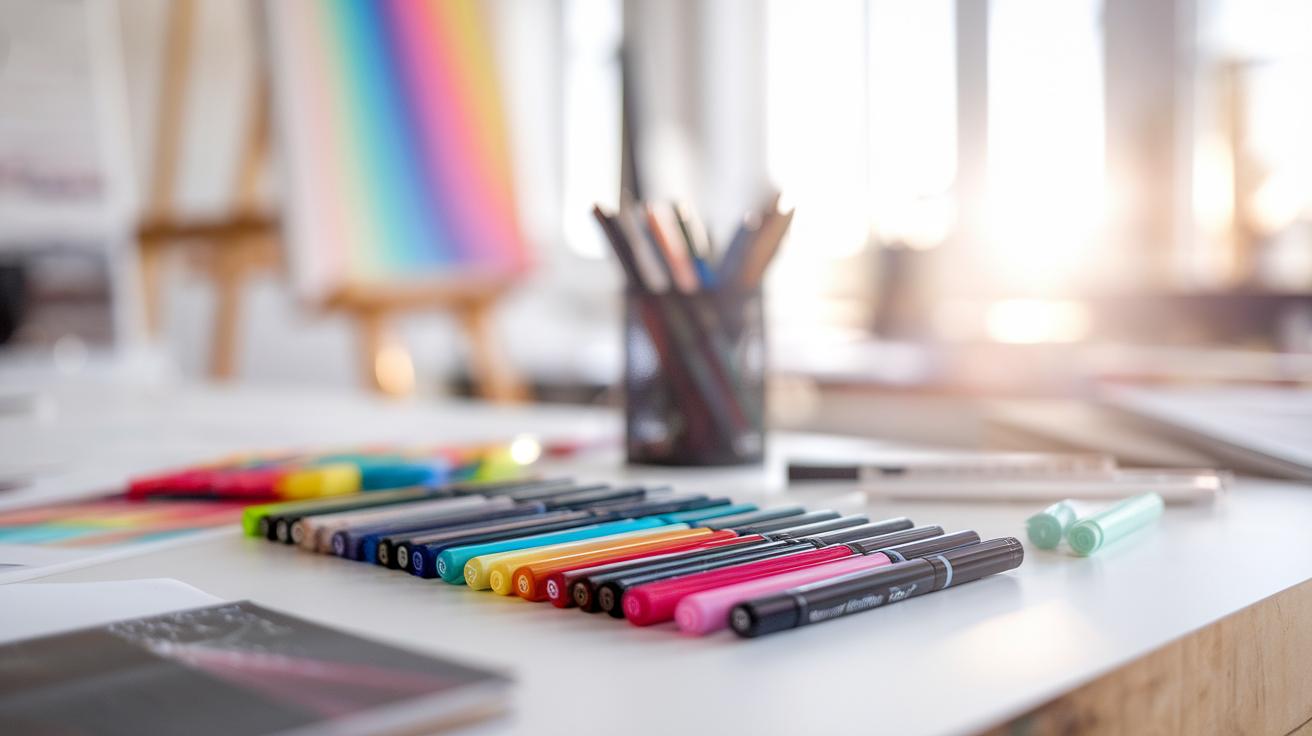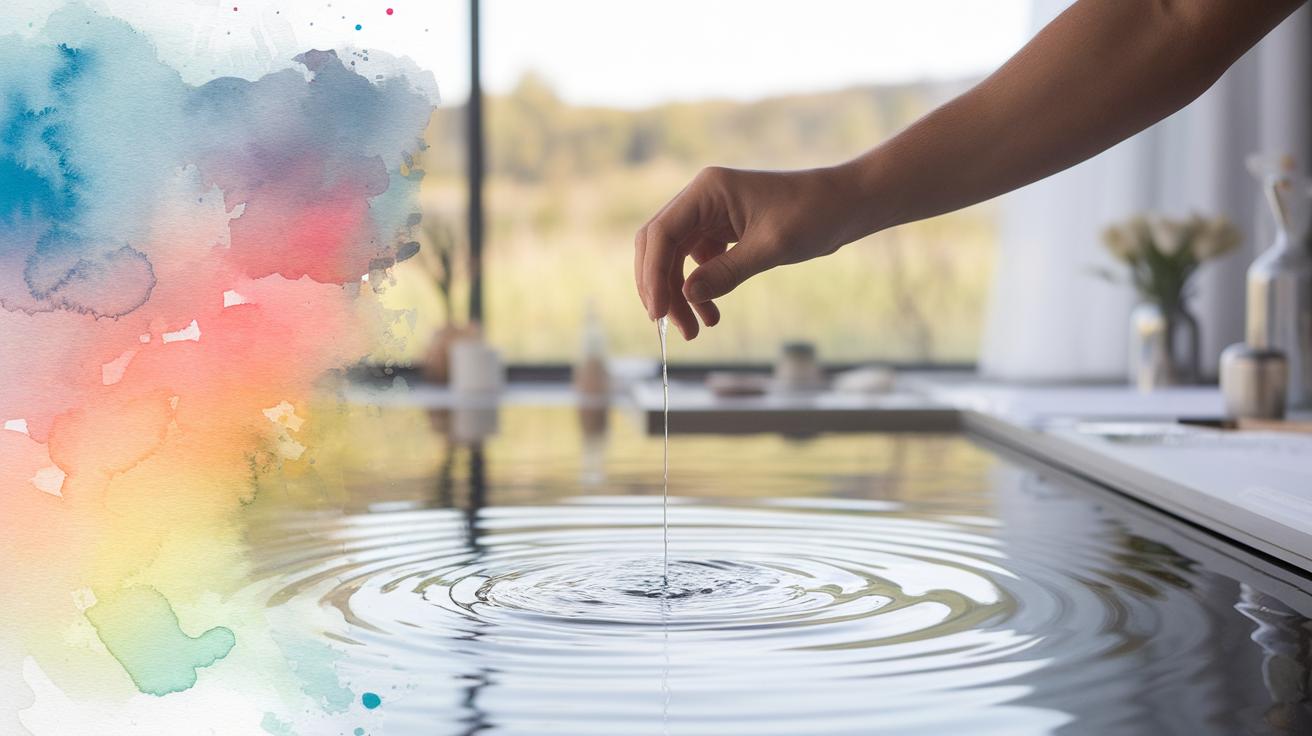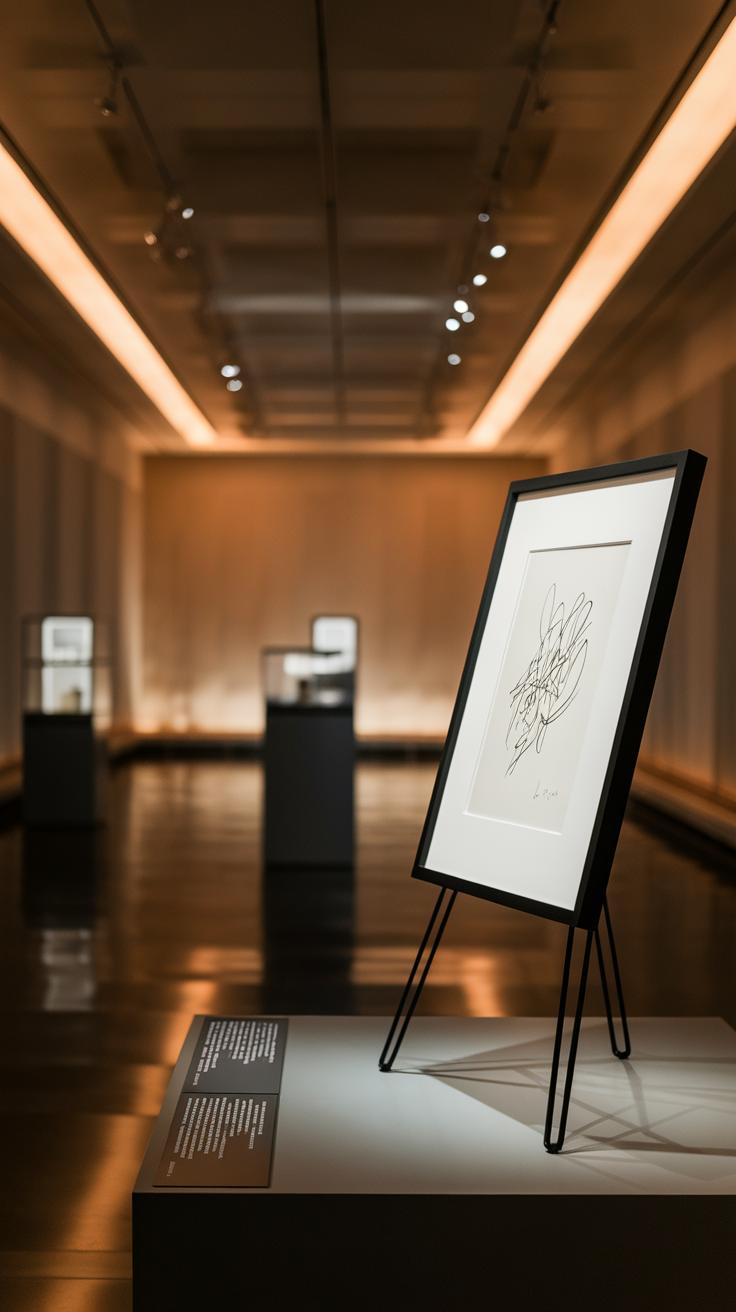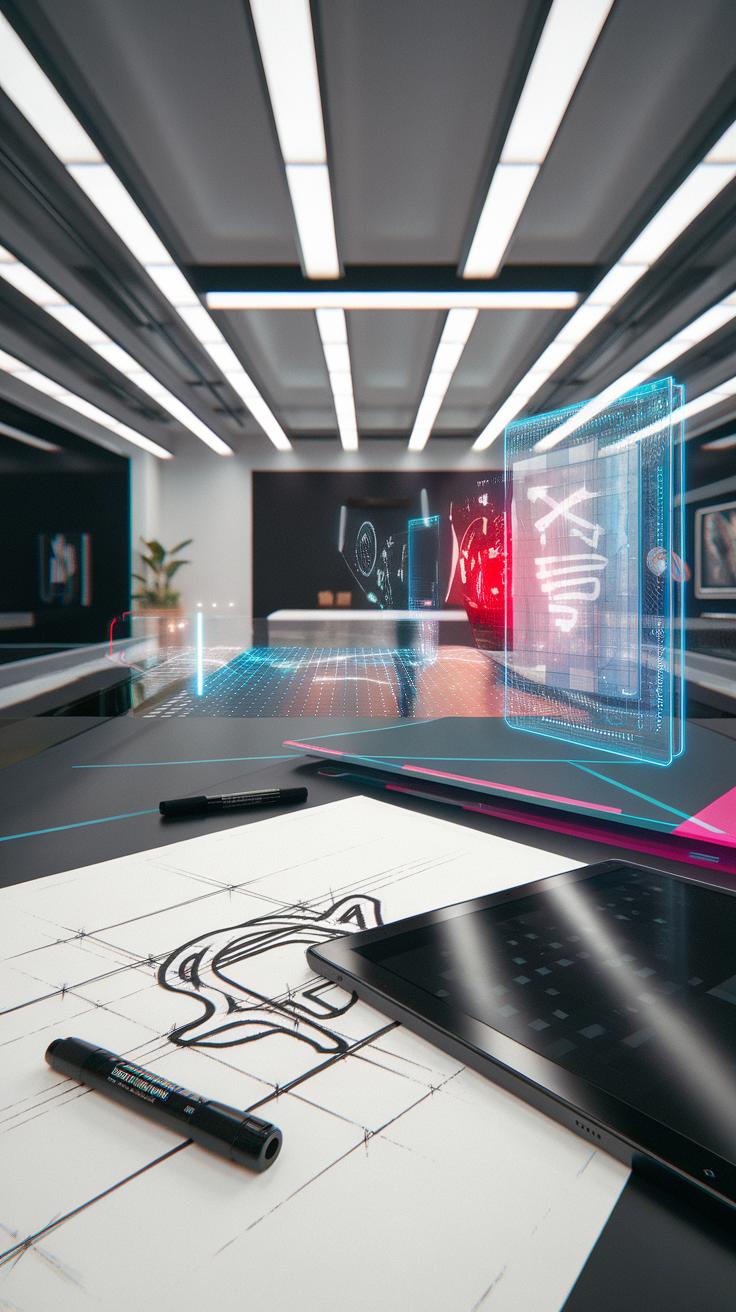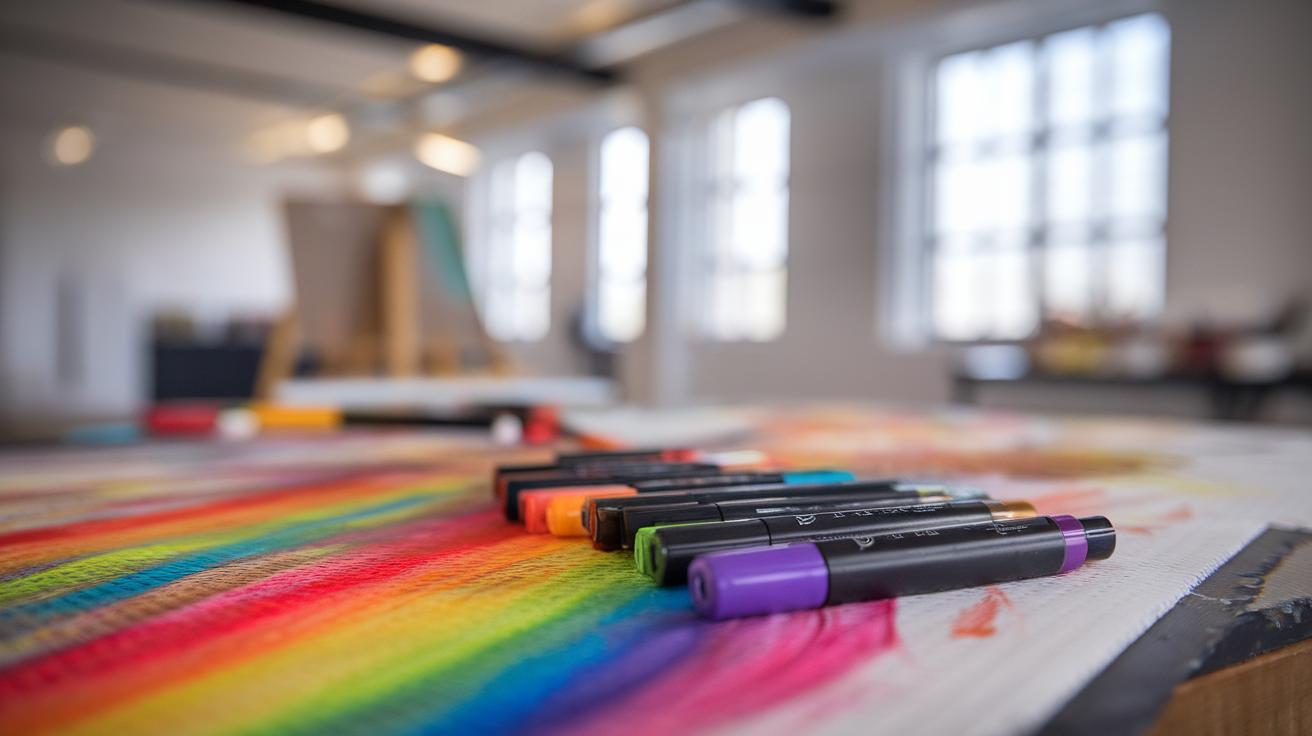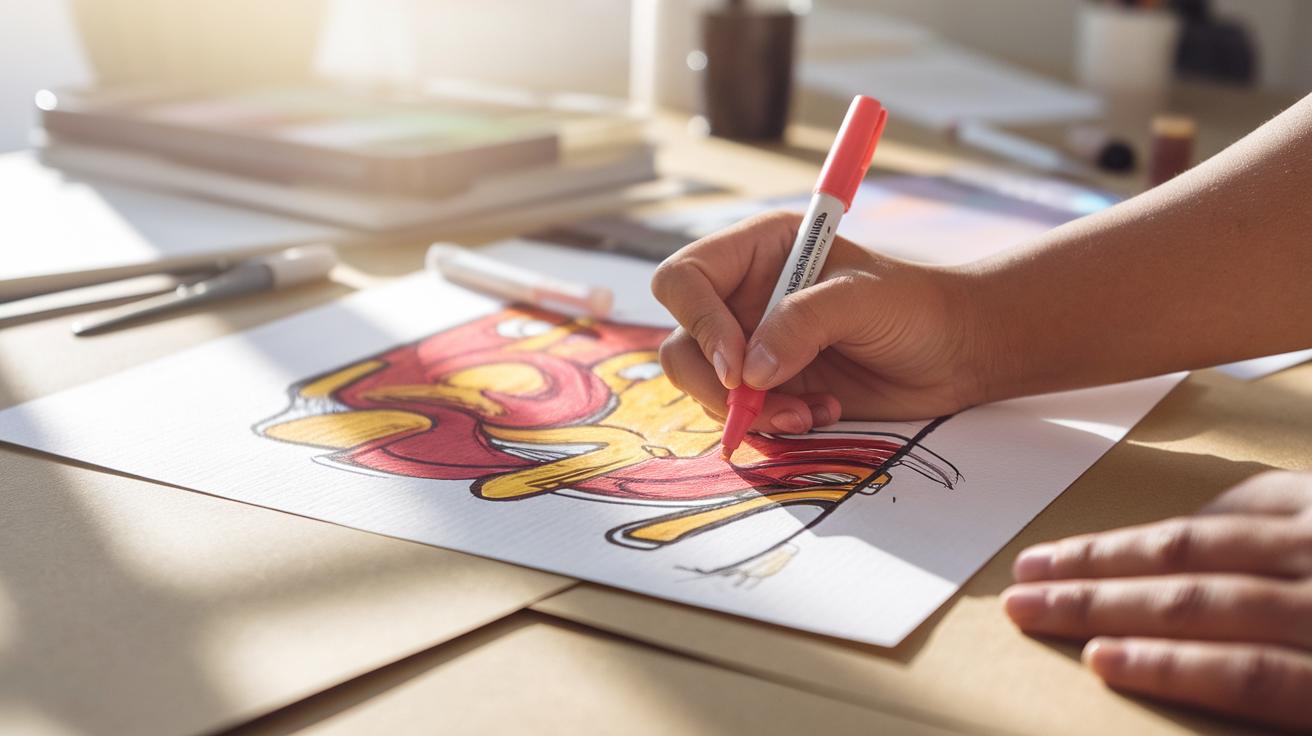
Bring Concepts To Life With A Vivid Marker Sketch
Introduction
Marker sketching is an exciting form of art that combines creativity with practicality. It brings ideas to life using markers, which have become essential tools for many artists and designers. The vivid colors and versatility of marker pens allow anyone to express themselves freely and capture their imagination on paper. This article will explore the depth of marker sketches, shedding light on techniques, tips, and the unique advantages of using markers.
As we journey through the fascinating world of marker sketches, we will delve into the history of sketching techniques, different types of markers, and how to master the essential skills. Whether you are an experienced artist or a beginner ready to dive in, this guide will help you enhance your understanding and skills in marker sketching, allowing you to transform concepts into compelling visual representations.
Understanding Marker Sketches
What are Marker Sketches?
Marker sketches use special pens filled with ink that dries quickly, allowing artists to create sharp lines and vibrant colors. These sketches stand out because markers provide bold shades and smooth textures, making them different from pencils or paints. While pencils produce softer, more subtle tones, markers offer immediacy and saturation. Artists appreciate markers for their ability to create detailed illustrations or energetic doodles without the lengthy drying time of paints. Using various techniques, such as layering and blending, artists can achieve a wide range of effects, from simple notes in a sketchbook to complex concept designs. The unique characteristics of marker sketches make them essential tools for artists and designers alike.
The Significance of Marker Sketches in Art and Design
Marker sketches play a crucial role in transforming ideas into visuals. Designers use these sketches to communicate concepts quickly, enabling clients to grasp ideas faster. Markers allow for experimentation, letting artists explore different styles and approaches without the fear of permanent mistakes. The accessibility of marker pens encourages both beginners and seasoned professionals to express their creativity. From illustrating storyboards to drafting product designs, marker sketches breathe life into concepts, helping convey messages clearly and effectively. The vibrant colors and dynamic lines captured in marker sketches showcase one’s artistic vision and contribute to the creative process.
The Evolution of Sketching Techniques
The Historical Development of Sketching Techniques
Artists have used sketching techniques for centuries. Traditional methods often involved pencils, charcoal, or ink. These materials allowed artists to create detailed works that conveyed their ideas. However, when the modern marker first appeared in the mid-20th century, a new chapter in sketching began. The vibrant colors and easy application of markers transformed the way people approached art and design.
Markers provided artists with a quick way to bring their concepts to life. Unlike traditional mediums, markers offer bold, brilliant colors that can instantly capture attention. As artists explored this medium, they discovered its versatility. They could create everything from fine details to broad strokes with ease. The accessibility of markers invited more people to sketch, opening up art to anyone willing to express their creativity.
The Influence on Contemporary Practices
Modern sketching practices reflect the evolution of markers. Artists now combine markers with other mediums, adding depth and texture to their work. The availability of different types of markers, such as alcohol-based and water-based variants, further expands creative possibilities. This blend of traditional and modern techniques has led to innovative styles that showcase the unique qualities of marker sketching. With markers, artists continue to explore and redefine how they convey their ideas and concepts.
Different Types of Markers Understanding Their Uses
Exploring Marker Varieties
Markers come in various types, each designed for specific tasks. Permanent markers provide a bold, long-lasting ink that resists fading. Artists often favor these for creating vivid sketches and bold outlines. Highlighters, on the other hand, serve to emphasize important text or notes. Their fluorescent colors make them perfect for study sessions, helping to draw attention to key ideas.
Marker Pens for Precision
Marker pens offer versatility and precision, allowing artists to execute fine details in their sketches. These pens often come with varying tip sizes, which help create different line widths. Some even feature brush tips, making them suitable for calligraphy or expressive illustrations. Understanding these different types enhances sketching skills, allowing artists to effectively bring concepts to life.
Mastering Sketch Techniques Essential Skills for Marker Sketching
Understanding Line Art in Marker Sketches
Line art forms the backbone of any great marker sketch. Clean and confident lines create structure and clarity. Use a variety of line thicknesses to add interest. Thinner lines can highlight details, while thicker lines can define main shapes. You can emphasize key features by outlining them with a darker marker. This contrast helps important elements stand out, guiding the viewer’s eye. Try practicing straight, curved, and wavy lines to develop a versatile sketching style. Regular practice brings control and precision to your line work, enhancing overall quality.
The Importance of Shading Techniques
Shading greatly enhances depth in your marker sketches. Use gradient shading to blend light and dark areas smoothly. Begin with lighter shades and progressively layer darker tones. Cross-hatching, where you draw intersecting lines, creates texture and dimension. Observe how light interacts with objects to replicate shadows convincingly. Experiment with different marker strokes and pressure to achieve various shading effects. Mastering these shading techniques adds realism and vitality to your artwork, transforming flat sketches into dynamic images full of life.
Plan Your Marker Sketch Bringing Concepts to Life
The Importance of Planning in Sketching
Planning plays a major role in creating a successful marker sketch. Before picking up a marker, think carefully about what you want to achieve. Consider the shapes, colors, and the overall mood you want to express. Start by outlining your ideas. Use simple shapes to build your composition. This approach allows you to visualize your concept clearly and avoids confusion later on. A strong plan acts as a roadmap for your sketch, guiding each decision you make throughout the process.
Creating Effective Sketches
To create effective sketches, focus on key elements. Begin by establishing a strong focal point. Think about where you want the viewer’s eye to land first. Use markers to highlight this area, making it more vibrant than others. Balance your sketch by distributing elements evenly across the page. Break down complex ideas into simpler parts. Don’t hesitate to make adjustments during your process; flexibility can lead to surprising creativity. With a solid plan and structure, your marker sketches will come to life, expressing your concepts vividly.
Techniques for Coloring and Layering in Marker Sketching
Color Application Techniques
Marker sketching allows artists to create vivid images through effective color application. Start by layering colors; choose a light color as the base and gradually add darker shades. This technique gives depth to your sketch and helps you create a more three-dimensional look. When using markers, try blending colors by layering them while they are still wet. This method produces smooth transitions and enhances the overall aesthetic of the artwork. You can also use markers with different tips to achieve various effects, such as fine lines or broad strokes, which add texture and interest throughout the piece.
Layering Strategies for Depth
Layering offers great opportunities for adding detail and dimension. Begin with a light hand and gradually build up the intensity. When applying darker hues, focus on areas that naturally receive less light. Keep in mind that the paper you use affects how the colors layer; experiment with different types to find the best fit for your markers. Wet-on-wet techniques enhance blending, while dry-brushing allows for controlled texturing. Avoid overcrowding your sketch with too many layers; maintain balance by letting certain areas have minimal color. This contrast will bring out the vibrancy of your chosen palette, making your concepts come alive.
Mistakes to Avoid in Marker Sketching Identify Common Mistakes Beginners Make When Creating Marker Sketches
Many beginners face challenges when starting their journey with marker sketching. One frequent mistake involves using too much ink in one area, leading to streaks or blotches. To fix this, practice controlling your pressure on the marker tip. Lighter pressure promotes smoother application and creates a more even color.
Another common error is neglecting to plan the sketch. Beginners often jump into drawing without a clear idea, resulting in cluttered or confusing compositions. Spend time sketching thumbnails or outlines before diving into the final piece. This preparation enhances your ability to visualize the overall concept.
Overlooking color blending leads to harsh transitions. Use lighter shades to gradually blend colors together. Implementing these strategies will enhance the quality of your marker sketches, allowing you to effectively bring your concepts to life.
Creating Impactful Sketches Explore What Makes a Marker Sketch Impactful and How to Captivate Your Audience
Understanding the Elements of Impact
A striking marker sketch relies on several key elements. Bright colors instantly grab attention, so use them wisely. Choose a color palette that enhances your message and matches the mood. Sharp contrasts can guide the viewer’s eye to important details. Keep your lines clean and purposeful, avoiding clutter that may distract from the central idea.
Composition also plays a vital role in impact. Arrange your elements strategically. Balance negative space with your main subject to create visual interest. A well-placed focal point can make a sketch memorable. Use scale to emphasize specific aspects, drawing the audience in. Small details can make a big difference, adding richness and depth.
Engaging Your Audience
Connecting with your audience is crucial. Think about what draws them in. Storytelling through images can evoke emotions, making your sketch resonate. Use relatable scenarios or characters to make the viewer feel involved. Incorporate movement within your sketches to convey energy and excitement, making the viewer want to explore more. Keep your style consistent; it helps establish familiarity and encourages repeat engagement.
Ensuring your sketches effectively communicate ideas fosters a stronger response. Collaborate with others for different perspectives. Sharing your work can lead to feedback that improves your skills and strengthens connections. Regularly practicing these techniques will ensure your marker sketches capture attention and inspire imagination.
Highlighting Your Work The Importance of Presenting Your Marker Sketches
Showcase Your Creativity
Sharing your marker sketches brings your ideas to life and offers a chance to gain valuable feedback. Displaying your work lets others see your unique perspective and style. Presenting sketches in different settings, like art shows or online galleries, can help you connect with others who appreciate your creativity. This interaction not only builds your confidence but also encourages you to grow as an artist.
Get Constructive Feedback
Receiving feedback plays a key role in improving your skills. When others critique your work, they provide insights that can help you refine your techniques and ideas. Constructive comments can reveal what resonates with your audience and highlight areas for improvement. Engaging in conversations about your sketches also fosters a sense of community among artists, allowing you to learn from each other and evolve your artistic expression.
The Future of Marker Sketching Speculate on the Future of Marker Sketching with Advancements in Technology and Art
Marker sketching stands at the edge of transformation as technology advances. Artists now explore digital tools that mimic traditional markers with surprising accuracy. Tablets with pressure-sensitive screens allow for the same bold strokes and textures that traditional markers offer, creating a seamless blend between digital and physical art.
New materials for markers, like eco-friendly inks and enhanced pigments, expand the possibilities. Artists can produce vibrant works that last longer and resist fading without harming the environment. Techniques that mix traditional sketching with 3D modeling software push creativity further. This fusion leads to innovative presentations where art jumps off the page, engaging viewers in unexpected ways.
As schools embrace art education, more students can learn marker sketching techniques. This growing interest may inspire a new generation of artists equipped with both traditional skills and modern technology.
Conclusions
Marker sketching represents an accessible yet profound avenue for creative expression. Whether for professional projects or personal exploration, the ability to create with markers opens doors to infinite possibilities. As this article showed, mastering the art of marker sketching involves understanding the tools and techniques, as well as embracing your unique style as an artist.
Anyone can embark on a rewarding journey with marker sketches. By practicing regularly and learning from feedback, you’ll not only improve your skills but also cultivate a deeper appreciation for the art form. So gather your markers, let your imagination run wild, and bring your concepts to life with vivid marker sketches.
